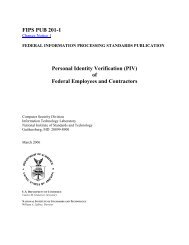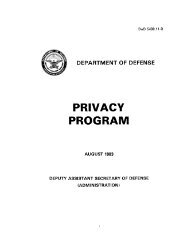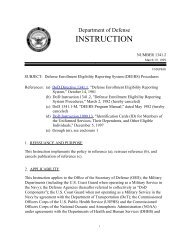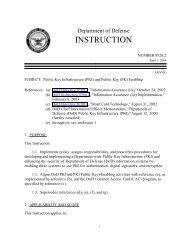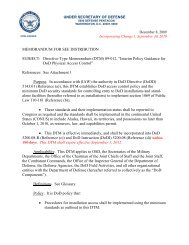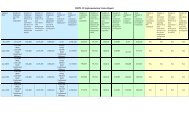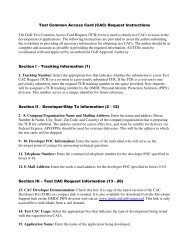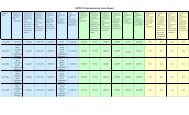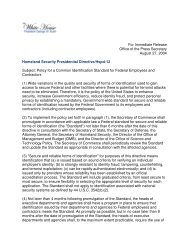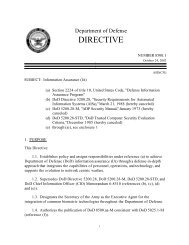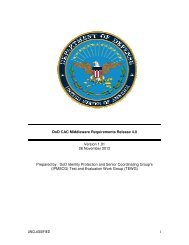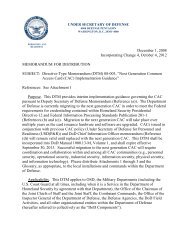DoD Instruction 8500.2 - Common Access Card (CAC)
DoD Instruction 8500.2 - Common Access Card (CAC)
DoD Instruction 8500.2 - Common Access Card (CAC)
You also want an ePaper? Increase the reach of your titles
YUMPU automatically turns print PDFs into web optimized ePapers that Google loves.
DODI <strong>8500.2</strong>, February 6, 2003<br />
Subject<br />
Area<br />
Control Number, Name and Text<br />
Enclave and Computing Environment<br />
ECAN-1<br />
<strong>Access</strong> for Need-to-Know<br />
<strong>Access</strong> to all <strong>DoD</strong> information is determined by both its classification and user<br />
need-to-know. Need-to-know is established by the Information Owner and enforced by<br />
discretionary or role-based access controls. <strong>Access</strong> controls are established and<br />
enforced for all shared or networked file systems and internal websites, whether<br />
classified, sensitive, or unclassified. All internal classified, sensitive, and unclassified<br />
websites are organized to provide at least three distinct levels of access:<br />
(1) Open access to general information that is made available to all <strong>DoD</strong><br />
authorized users with network access. <strong>Access</strong> does not require an audit transaction.<br />
(2) Controlled access to information that is made available to all <strong>DoD</strong> authorized<br />
users upon the presentation of an individual authenticator. <strong>Access</strong> is recorded in an<br />
audit transaction.<br />
(3) Restricted access to need-to-know information that is made available only to an<br />
authorized community of interest. Authorized users must present an individual<br />
authenticator and have either a demonstrated or validated need-to-know. All access to<br />
need-to-know information and all failed access attempts are recorded in audit<br />
transactions.<br />
Enclave and Computing Environment<br />
ECAR-3<br />
Audit Record Content<br />
Audit records include:<br />
- User ID.<br />
- Successful and unsuccessful attempts to access security files<br />
- Date and time of the event.<br />
- Type of event.<br />
- Success or failure of event.<br />
- Successful and unsuccessful logons.<br />
- Denial of access resulting from excessive number of logon attempts.<br />
- Blocking or blacklisting a user ID, terminal or access port, and the reason for the<br />
action.<br />
- Activities that might modify, bypass, or negate safeguards controlled by the<br />
system.<br />
- Data required to audit the possible use of covert channel mechanisms.<br />
- Privileged activities and other system-level access.<br />
- Starting and ending time for access to the system.<br />
- Security relevant actions associated with periods processing or the changing of<br />
security labels or categories of information.<br />
Enclave and Computing Environment<br />
ECAT-2<br />
Audit Trail, Monitoring, Analysis and Reporting<br />
An automated, continuous on-line monitoring and audit trail creation capability is<br />
deployed with the capability to immediately alert personnel of any unusual or<br />
inappropriate activity with potential IA implications, and with a user-configurable<br />
capability to automatically disable the system if serious IA violations are detected.<br />
IA Service<br />
Confidentiality<br />
Integrity<br />
Integrity<br />
87 ENCLOSURE 4, ATTACHMENT 4



